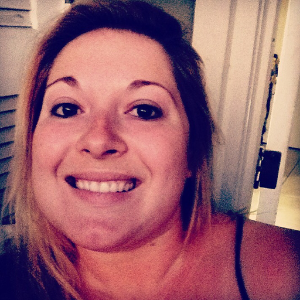Jul 23, 2020
Plasma Preparation
This protocol is a draft, published without a DOI.
- 1University of California, San Diego
- George Lab @ UCSD
- Metabolomics Protocols & Workflows

Protocol Citation: Sierra Simpson, Olivier George 2020. Plasma Preparation . protocols.io https://protocols.io/view/plasma-preparation-babfiajn
License: This is an open access protocol distributed under the terms of the Creative Commons Attribution License, which permits unrestricted use, distribution, and reproduction in any medium, provided the original author and source are credited
Protocol status: Working
We use this protocol and it's working
Created: December 09, 2019
Last Modified: July 23, 2020
Protocol Integer ID: 30791
Abstract
Protocol for preparing plasma for metabolomics studies / GWAS
Materials
MATERIALS
10mL syringeVWR international LtdCatalog #75846-756
General Use and PrecisionGlide Hypodermic Needles, 18 G x 1.5 in. (38mm); Regular bevel; PinkThermo FisherCatalog #148265D
Denville Posi-click 1.7ml Eppendorf Tubes Catalog # C2172
Microvette Blood Collection w/inner tube EdtaFisher ScientificCatalog #NC9976871
BD Vacutainer™ Plastic Blood Collection Tubes with K2EDTA: Hemogard™ Closure Fisher ScientificCatalog #BD 367862
Before start
Prepare 2ml eppendorf tubes to spin down whole blood
Ensure that blood is taken using tubes coated with EDTA ( heparin is not as good as it causes hemolysis )
Always keep blood at room temperature
Collect blood into the EDTA coated microvette tube.
Once spun, about half will be plasma, half will be whole blood. Room temperature
For initial harvest of blood, we use retro-orbital blood sampling. This is done under general anesthesia ( isofluorane )
- The tip of the capillary tube is placed at the medial canthus of the eye under the nictitating membrane.
- A short thrust past the eye and the capillary will enter the sinus membrane which will have slight resistance.
- Apply slight pressure to the membrane and the blood will begin to flow into the capillary.
- Collect 200-400ul, then remove the capillary tube from under the eye and apply slight pressure to stop bleeding.
- Invert the tube 2-3 times to ensure the EDTA is evenly mixed in the sample, then move to step 2.
For the final harvest of blood, we collect during the dissection of the animal. This allows us to directly collect blood from the circulatory system. The animal is first anesthetized with carbon dioxide, and then the heart is exposed.
- With an 18 gague needle, puncture slightly to the right side ( animals left) of the apex of the heart.
- Apply slight backward pressure to the syringe to extract the blood.
- 2-3 mls is sufficient. The blood is transferred from the syringe to an EDTA coated tube.
- Invert the tube 2-3 times to ensure the EDTA is evenly mixed in the sample, then move to step 2.
Maintain the whole blood sample at room temperature, then aliquot the sample into a single tube or multiple tubes depending on the sample size. Freezing or extended time on ice will result in hemolysis.
Spin the whole blood samples for 10 min at 2000 g at RT to pellet the erythrocytes.Room temperature
10m
Immediately transfer 500 µL aliquots of the plasma in to fresh 2 mL labeled eppendorf tubes using a pipette with appropriate filter tip. Care should also be taken to avoid taking any red blood cells over into the plasma. It is best to err on collecting less than contaminating with red blood cells.
Visualize the quality of the plasma on the hemolysis scale below and mark the color of the plasma according to the scale 0-6 on the GWAS Blood collection sheet. It is optimal that the score is less than "1", take extra notes if there is excessive hemolysis, or clotting in the sample.
Hemolysis Scale
Special care should be made to ensure that the identification on each vial is legible. Make sure that the pen you use is permanent ink and will not wash off upon thawing.
Make sure the tube is labeled with an "A" for BSL, a "B" for final blood
Samples should be stored at -80 °C until analysis and all transportation should be carried out under dry ice.
